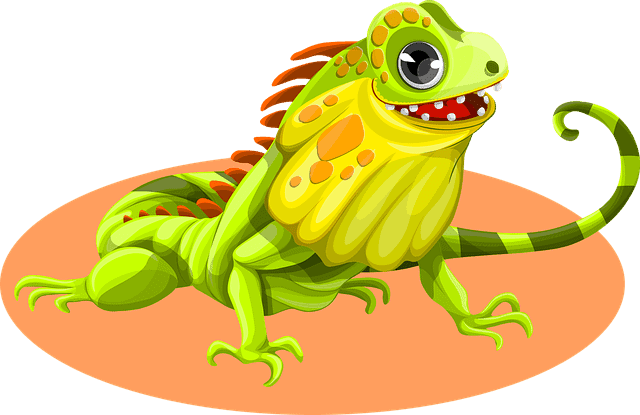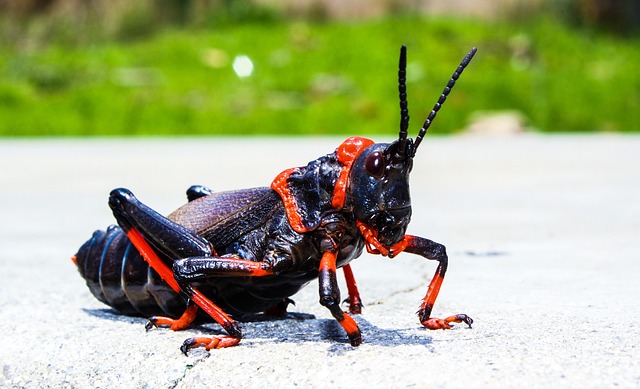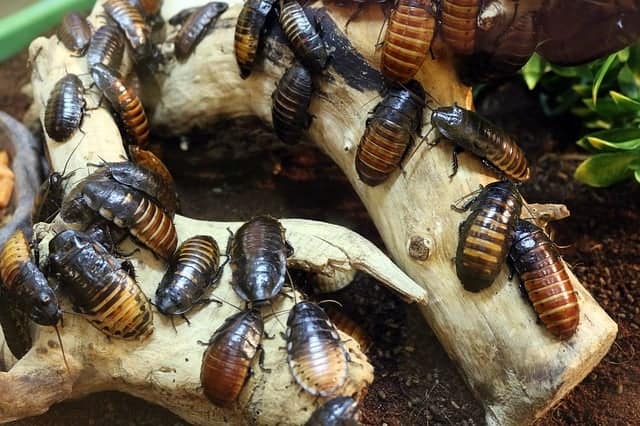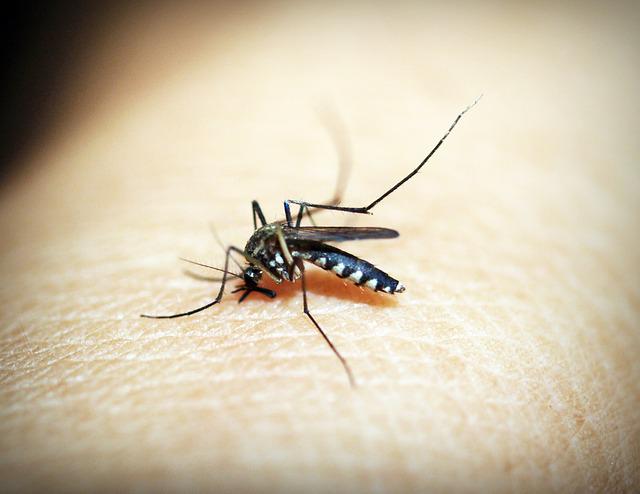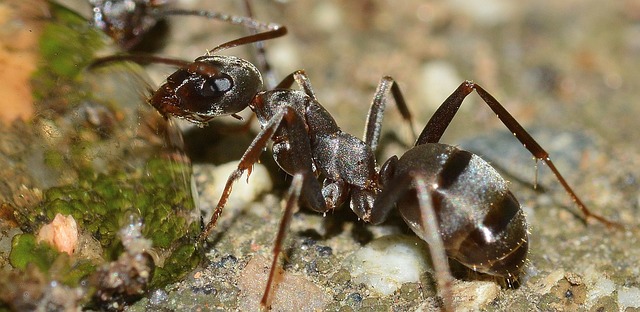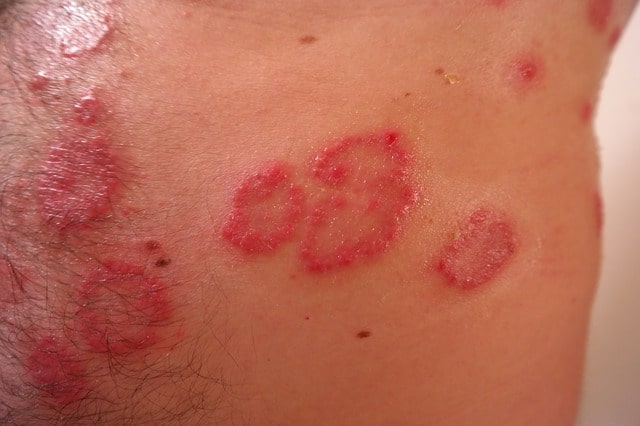Do Lizards Have Teeth? – Reptile Dentition
Probably you’ve seen a lizard running around your house or yard. So, you’re wondering whether these reptiles can bite you, other humans, in your residence, or even pets.
Further, how do these lizards even feed – with or without teeth? So, do lizards have teeth?
- The short answer is, YES! Lizards have teeth that are well adapted to the type of food they eat. The dentition of lizards varies from one species to another within the taxonomic family where some have pleurodont teeth formation while others have acrodont teeth.
- The shape of their teeth is either conical, pointed, or serrated to help them grip the prey and push it into the digestive tract. Lizards do not have alveoli or tooth sockets in their dentition. Some lizard species have venom ducts connected to their tooth roots to help paralyzed their prey.
Related: Can Bearded Dragons Eat Tomatoes?
Do Lizards Have Teeth? – Reptile Dentition
Lizards have teeth that are well adapted to the type of food they eat. Lizards, unlike mammals which have several types of teeth, have all their teeth similar (one type) except a few species.
Normally, lizards do not have teeth sockets or alveoli. Their teeth are either acrodont or pleurodont.
1. Acrodont teeth classification.
In this classification, the teeth are superficially fused to the tooth-bearing bone usually at the biting edges of the maxilla and mandibles.
Particularly, this fusion should be handled with care (by lizard owners) since acrodont dentition is not replaceable on removal. However, only young lizards can have their acrodont teeth replaced.
The acrodont teeth are weak and easily lost. With wear and tear resulting from biting, their jawbones are left exposed or sometimes bleeding due to abrasive action.
Lizards possessing the acrodont type of teeth include Agamid lizards like water dragons, bearded dragons, and chameleons. Acrodont class is highly susceptible to diseases such as periodontal.
2. Pleurodont teeth classification.
This is the main type of dentition that is found in most lizards. The teeth are attached to the interior side of the jawbone creating a wider surface that offers strong fusion as compared to the acrodont type.
The teeth are often replaced in the lifetime of lizards while others may be swallowed with the prey during feeding. Some lizards may grow numerous teeth in their palate.
The front acrodont teeth are shed off and replaced often since they are frequently involved in grasping, biting, and holding the prey when feeding as compared to the posterior teeth.
The sharpness and shape of the pleurodont class lizards vary from species to species. The majority of lizards have short, sharp-pointed, and conical-shaped pleurodont teeth.
Some lizards like Kamodo Dragons have curved and serrated teeth that can cut hard flesh causing serious breeding on biting.
Molluscivores such as Nile Monitor and Caiman Lizard have teeth that are flat, blunt, and rounded. These teeth also have crowns, at the back of the jaw, adapted to the crushing of crustaceans such as clams and snails.
Venomous lizards, also known as heloderma, have a large longitudinal fold or groove in the interior part of each lower jaw tooth that helps in storing venom used to paralyze the prey.
Lizards that are herbivores such as iguana have wide and flat teeth crown with serrated sides adapted to plant feeding. The pleurodont class of lizard teeth is mainly found in monitor lizards, iguanas, anoles, basilisks, and chuckwallas.
3. Thecodont teeth classification.
This type of teeth is mainly found in other reptiles such as snakes, crocodiles,s and all mammals. Importantly, the thecodont teeth are easily confused with the pleurodont and acrodont types in reptiles – you must therefore be keen.
However, the thecodont type of teeth is characterized by well-established, deep bony sockets which hold into place teeth that are replaceable in a given order and cycle according to the individual animal species.
Thecodont is firmly adapted for strong grasping without being shed off.
How Many Teeth Do Lizards Have?
Different species of lizards have a varying number of teeth from the young stage to adulthood. These lizard species include:
- This type usually has an average of 20 to 30 teeth in each quadrant. At maturity, iguana would have a total of 80 to 120 teeth.
- Nile Monitor. Its teeth are classified into: premaxillary teeth are 9, each maxilla has 10 to 11 teeth and each dentary has 11 to 12 teeth that are well adapted to crushing and grinding food.
- Kamodo Dragon. It has approximately 60 teeth protruding one inch from the jawbone. The teeth are sharp-pointed and cause serious harm on a single bite.
- Apart from few exceptions, an average Gecko has approximately 50 to 100 teeth. However, a leaf-tailed Gecko has 300 or more teeth – the largest number of teeth ever found in lizards.
- The number of teeth found in skinks is not defined in various species available. However, the minimum number of teeth you can get in a given skink is 20 while the highest number is 90 teeth on average.
- An adult chameleon has 32 to 44 teeth on average. However, these are not the number of teeth it has during death. Most of the front teeth are worn out or removed due to grasping and biting, leaving behind a roughjawbone.
What are Lizard’s Teeth Used For?
Lizard’s Teeth can be used in any of the following functions:
1. For Feeding.
These are the primary functions. Lizards use teeth to grasp, bite, and coarse the food/prey before swallowing.
- The teeth also help in preventing the prey from slipping away during feeding.
- Some lizard species use their teeth to cut prey into small sizes that would facilitate easier swallowing.
Normally, Lizards don’t chew their food; instead, they swallow in bits.
2. For Protection/Defense.
Lizards use their teeth for defense in case of danger.
Veterinary examination shows that young lizards make rapid snaps when agitated or stressed as they try to bite while large adult lizards make deep cut when biting and use their tails to knock off their enemy.
3. Aid in Mating.
During the copulation period, male lizards latch on the female. It bites the female’s back, head, or neck to gain the ample stability needed during mating.
The Iguana lizards are more aggressive as compared to other species since the female produces pheromones during the menstrual cycle that attracts the male often.
Do Baby Lizards Have Teeth?
Yes! Young lizards are hatched with teeth in place for eating. As the lizard grows and near maturity, the teeth increase in number. The Pleurodont class of lizards is able to shed off and replace their teeth regularly up to 6 times a year.
Contrary, the acrodont class of lizards do not replace their teeth once they are shed off.
- Therefore, special care should be taken (by owners) when handling these species of lizards.
- The teeth of baby lizards are adapted to feeding on soft food substances.
Though they can grasp, the teeth are usually not strong enough to cause any substantial resistance against their prey. So, most of the young lizards are fed by their mothers.
Can Lizard Bite Human Being?
Lizards, usually, will bite you if they feel threatened or when they are stressed. Some of these bites are not injurious (are harmless) while some lizards are poisonous and may infect you, your humans, and pets badly.
Iguanas, Monitor lizards, and Nile monitors are some of the lizards that are rampant in biting when threatened or stressed.
Normally, Lizards don’t attack human beings. They live a cohesive and associative life with the human being thus becoming a nice pet to have.
However, research shows that lizards at times rebel, a special class of people such as veterinarians, when undergoing medical checkups – they try to defend themselves by biting back.
In case a lizard bites you, it is necessary to seek medical attention from the hospital.
However, most of the bits from house lizards (Geckos) are mild scraps that can be attended at home using a home fast aid kit.
NB: It is advisable to wear protective gear always when handling lizards during medications and physical checkups. Related: Are Leopard Geckos Nocturnal?
Conclusion
All lizards have teeth. The teeth of young lizards increase in number as they grow to their adulthood.
- Importantly, lizards have either acrodont or pleurodont type of teeth that are well adapted to feeding, mating, or defense.
- Lizards rarely bite human beings. Their bites are usually harmless though there are few species that have venom that may cause infections.
Lizards are generally harmless thus can be nice pets if taken care of well.

